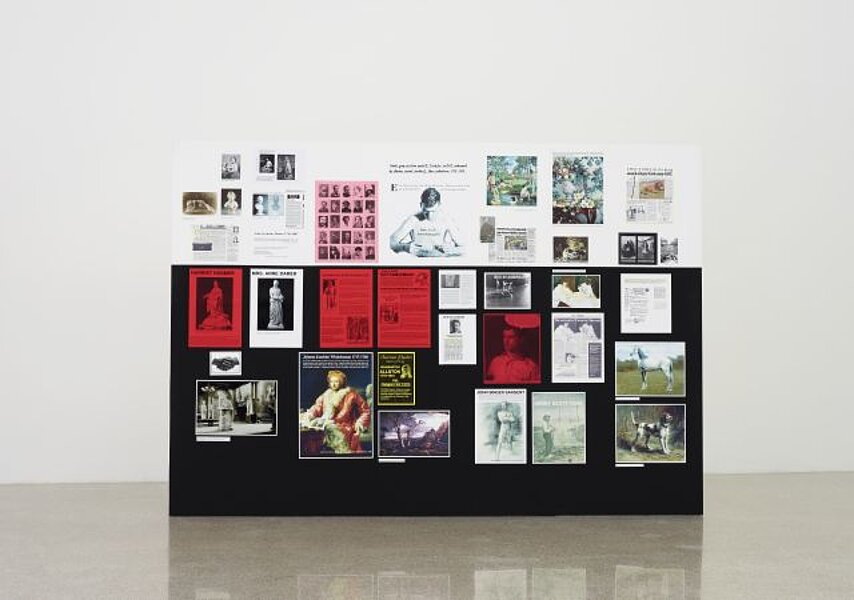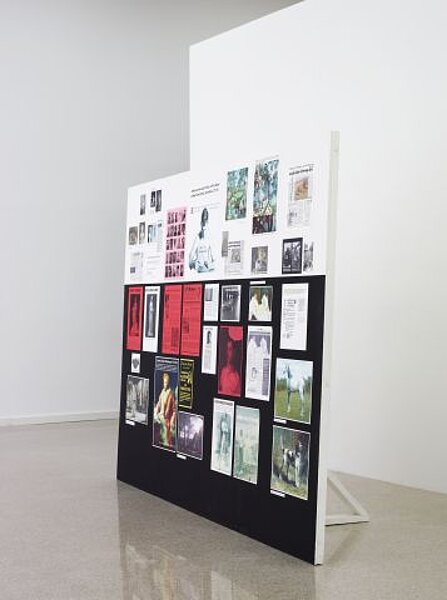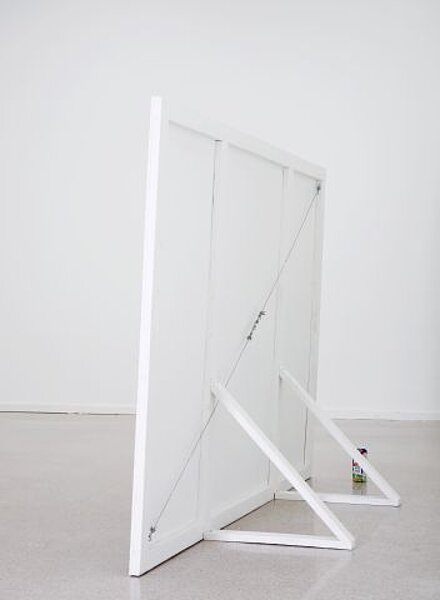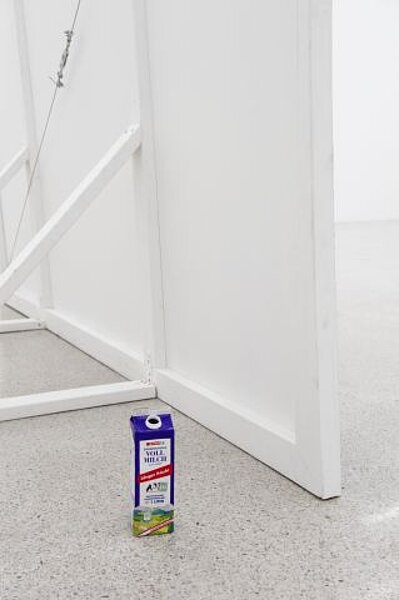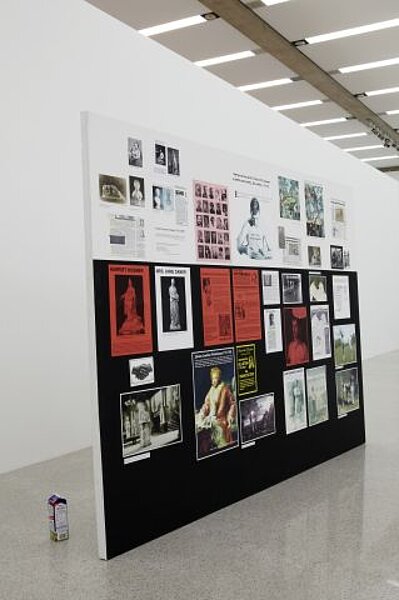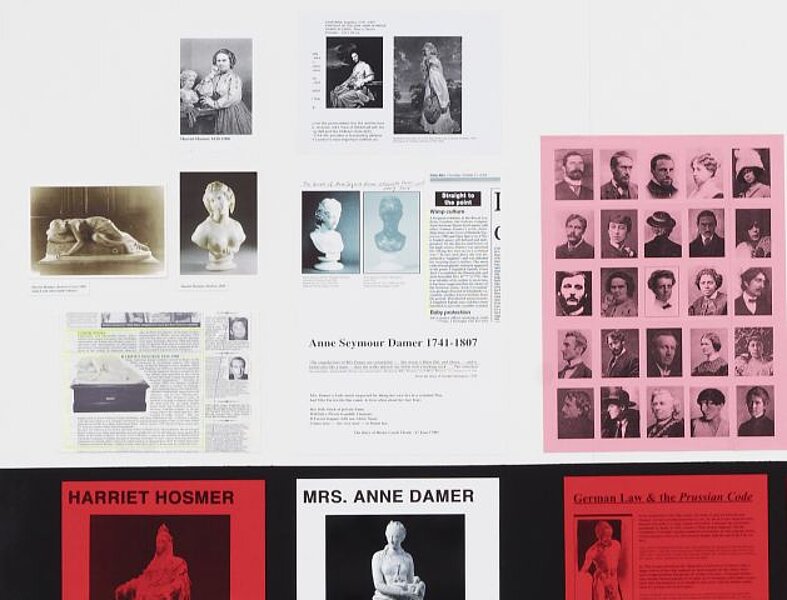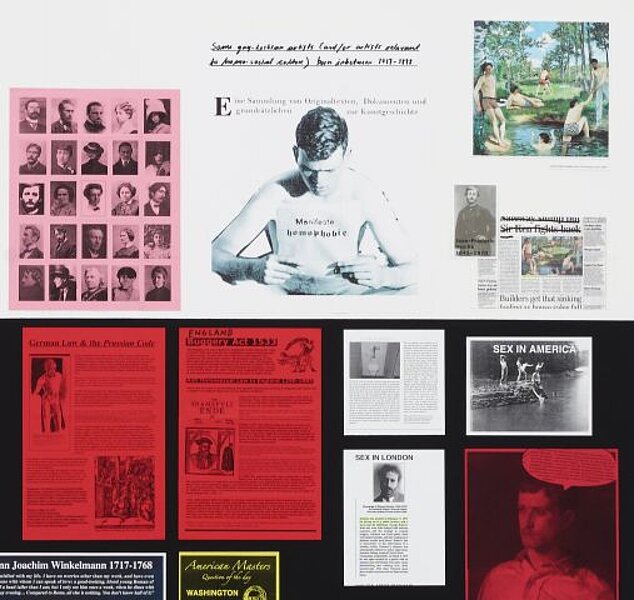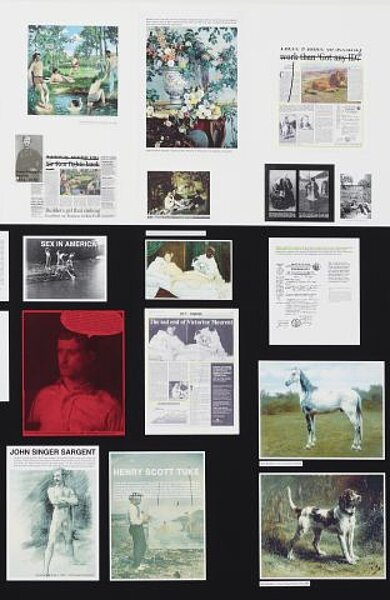
Olesen, Henrik
Some gay-lesbian artists (and/or artists relevant to homo-social culture) born in-between 1717–1898 born inbetween 1717-1864
2006
| Object description | Wall installation, collage of computer printouts on a wooden board |
|---|---|
| Dimensions |
Objektmaß:
height: 208,3 cm,
width: 300 cm,
depth: 86,4 cm
|
| Year of acquisition | 2011 |
| Inventory number | P 666/0 |
| Creditline | mumok - Museum moderner Kunst Stiftung Ludwig Wien |
| Rights reference | Olesen, Henrik |
| Further information about the person | Olesen, Henrik [GND] |
| Literature |
Museum der Wünsche Museum der Wünsche |
Clippings from newspapers, magazines and books show homosexual artists (male and female) of the 18th and 19th century. On a moveable wall Danish artist Henrik Olesen developed a pictorial history of homosexual culture. Diverse subject-related contributions supplement the tableau as if in an archive. In the midst of this officially unwritten art history there is a portrait of Johann Joachim Winckelmann who is generally regarded as the founder of art history. With the formula “noble simplicity, quiet greatness” he made antiquity into the model for artistic activity and its absolutely central subject. Winckelmann’s concept of art was stamped on generations of artists up to the 20th century. As a homosexual himself, Winkelmann is an example of how homosexuality was excluded from official historiography because of a social convention. Olesen describes a multitude of subcultures, codes and gestures that are invisible in heterosexually-structured art history. His method of collecting information on the wall display represents a common form of recording information, bringing images and texts together, and constructing connections. Olesen transfers this method from science into his artistic practice and exposes its claim to objectivity and completeness as being pure assertion. His research end with the invention of the words “hetero- and homosexuality” in the late nineteenth century. He shows that the categorical assignment differentiating a minority from the majority can be traced back to the scientific ambitions of the age which were in many respects questionable.
© mumok – museum moderner kunst stiftung ludwig wien
